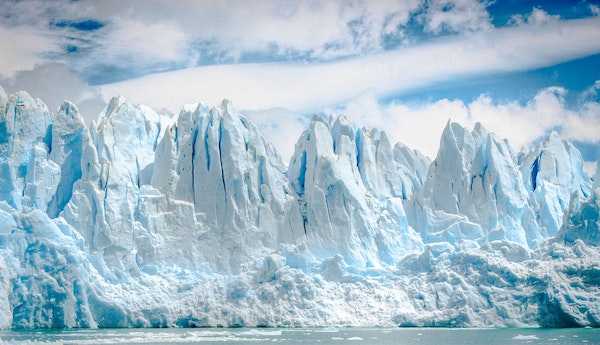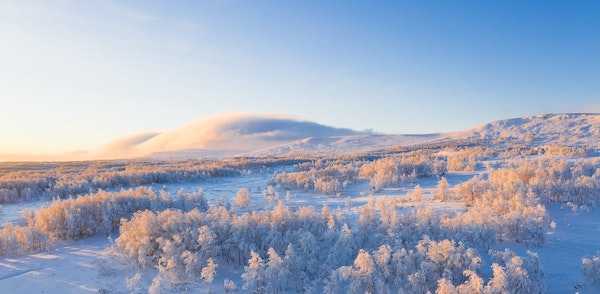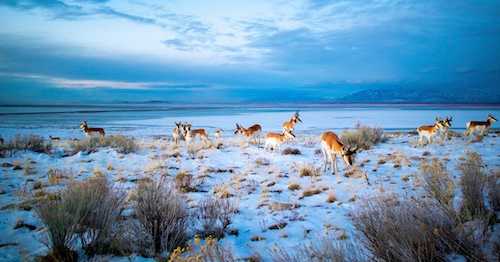FAQ 5: What strategies could increase the climate resilience of people and nature?
The WGII overarching Frequently Asked Questions (FAQs) are an outreach material. They are based on the WGII Report and aim to help to interpret its concepts and findings to a broad audience. This version can still be subject to copyedits and tricklebacks.
Nature offers a lot of untapped potential, not only to reduce climate risks, and deal with the causes of climate change, but also to improve people’s lives. By restoring and safeguarding ecosystems on land and in the ocean, we help plants and animals to build climate resilience. Nature, in turn, can help us regulate the climate, give us clean, safe water, control pests and diseases and pollinate our crops. However, investing in nature alone won’t be enough. To secure a healthy, liveable planet for everyone, we need to transform our way of life fundamentally, especially key elements such as our industry and energy sector as well as how cities and infrastructures are planned and built. Taking action now gives us the best chance of success.
Climate change is a threat to human well-being and the health of the planet. According to our new report, it requires urgent and far-reaching actions and fundamental changes in all aspects of human life to increase people’s and nature’s ability to cope with, and respond to, climate change. One key to success is acknowledging climate, biodiversity, and human society as a coupled system, meaning that all components are interlinked. If we change one of them, it will affect the other two as well. Based on this recognition, conservation and climate change responses would be planned and implemented hand in hand – not only locally, but across landscapes, in cities as well as in rural areas, across sectors, state and country borders. All actions and decisions would be based on the overarching goal to get the best outcomes for climate, biodiversity and the people living in the areas, where actions will be implemented.
While planning those actions, we should keep in mind that only diverse and healthy ecosystems are able to provide the services that are essential for reducing climate change risks. Thus, protecting and restoring ecosystems on land and in the ocean is a key element for success. A range of scientific evidence indicates that the capacity to provide these services relies upon 30 to 50% of Earth's surface (land, freshwater and ocean) to be effectively conserved and for natural resources to be sustainably managed.
An increasing body of evidence demonstrates that climatic risks to people can be lowered by strengthening nature, meaning that we invest in protecting nature and rebuilding ecosystems to benefit both people and biodiversity. Flood risk along rivers, for instance, can be reduced by restoring wetlands and other natural habitats in flood plains, by restoring natural courses of rivers, and by using trees to create shade. Cities can be cooled by parks and ponds and by greening streets and buildings’ rooftops and walls. Farmers may increase their businesses’ climate resilience by diversifying their crops and livestock, by planting trees and bushes on the fields for shade and organic manure (agroecological farming), by increasing soil health (more soil organic matter), and by combining crops, livestock and natural elements such as trees and bushes.
Actions and solutions that safeguard nature are relatively inexpensive in many parts of the world because they do not rely on complex machinery or on the development of extensive infrastructure. However, to realize potential benefits and avoid harm, it is essential that these solutions are deployed in the right places and with the right approaches for that area, guided by local and indigenous knowledge, scientific understanding and practical expertise. Knowledge is the key.
But relying on nature alone won’t be enough. An overall increase in climate resilience requires two combined sets of actions: first, a wide range of actions that reduce human-induced greenhouse gas emissions drastically; secondly, a similarly wide range of actions that transform the way we live our lives and puts human society on the path of sustainable development. The latter is fundamental to enable climate action because, without sufficient knowledge and income as well as governmental support and a fair chance of participation in decision-making processes, many human communities won't be able to contribute to emission reductions or adapt to change. That is especially true for the very poor, for whom struggling to feed the family may occupy all their time and resources.
That is the reason why sustainable development in a climate context includes for example clean energy generation, circular economies, healthy diets from sustainable farming, appropriate urban planning and transport, universal health coverage and social protection, training and education as well as water and energy access for everyone to help to reduce poverty.
The risks posed by climate change vary by location, time, and among different populations. That means each community and each nation has its own starting point for climate adaptation and sustainable development. But, whichever pathway is followed, Climate Resilient Development will only be possible with fundamental changes in five major areas: 1) in our world’s energy systems; 2) in the way we use, manage and safeguard the land and freshwater, the oceans and their respective ecosystems; 3) in the way cities and infrastructure are planned, built, organized and governed; 4) in the way our economies and industries function and 5) in the way our societies function on a local, national and international level.
The earlier these changes are implemented, with an emphasis on equity and justice, the more options and solutions for Climate Resilient Development will become available. We don't have any time to lose. As our report has also shown, missing the Paris Agreement goals will limit our options for a sustainable and climate resilient future, because a warmer world brings higher climate impact risks to which people and places will have to adapt. We know now that securing a healthy and climate resilient future for all is difficult, if not impossible to achieve in many regions, with global warming higher than 2°C over the medium and long term.


